#plant sciences
Text
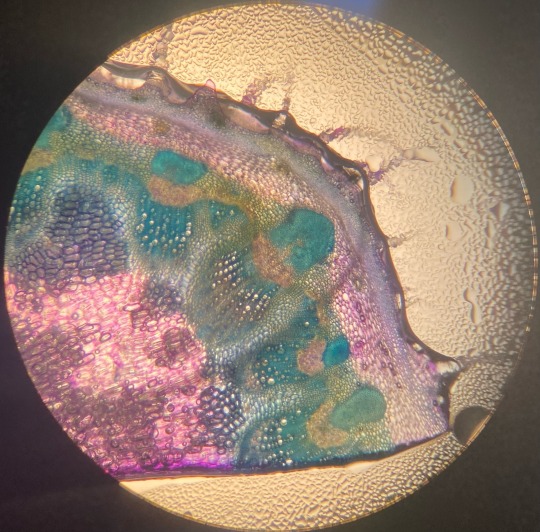
sunflower stem cross section with TBO dye
25 notes
·
View notes
Photo

66K notes
·
View notes
Text

When it rains the white petals of Diphylleia Grayi also known as skeleton flowers, turn crystal clear.
35K notes
·
View notes
Text

Imagine a pinecone as heavy as a bowling ball and the size of a chihuahua. Believe it or not, such pinecones exist—and they belong to the coulter pine (Pinus coulteri), a conifer that can be found in parts of North America including California and Mexico. Infamous among loggers and foresters, this tree is nicknamed "the widowmaker" because of the unlucky individuals who met their fate as a result of its falling pinecones. This species produces the largest pinecones on the planet, weighing up to 11 lbs (5 kg)!
Photo: damontighe, CC BY-NC 4.0, iNaturalist
#science#nature#natural history#trees#botany#pinecone#fact of the day#did you know#conifers#pine cones#plants#widowmaker#forest
4K notes
·
View notes
Text
Okay, so this is really cool! You have this phenomenon where some plants grow edible appendages to their seeds to entice ants to carry them underground where they can safely sprout. And then you have wasps which lay their eggs on the leaves, stems, and other parts of plants and trigger the growth of galls (swellings) which both feed and protect the wasp larvae until they reach maturity.
The boy who was watching the ants noticed they were taking wasp galls underground, too. Further exploration found that the wasp larvae were unharmed inside the galls; the only thing the ants had eaten were edible appendages similar to those on the seeds they collected. The wasp larvae stayed safe inside the ant nest, feeding on their galls, until it was time to emerge and head back out to the surface.
So it turns out that the edible portions of the galls have the same sorts of fatty acids as the edible parts of the seeds. And those fatty acids are also found in dead insects. Scientists think that the wasps evolved a way to make the galls they created mimic the edible portions of the seeds to get the ants to collect the galls. This isn't the only example of wasps making use of ants as caretakers for their young, but it's a really fascinating example thereof--especially if you consider ants evolved from wasps at least 100 million years ago.
#wasps#ants#plants#galls#oak galls#insects#invertebrates#Hymenoptera#ecology#bugs#animals#wildlife#nature#trees#entomology#science#natural science#evolution#animal behavior
12K notes
·
View notes
Text
In light of that little "sharks are older than the north star" post, here's some other little fun facts i keep in my brain for such an occasion:
-mammals are older than flowers
-fungi are more closely related to animals than plants
-the t-rex existed in a closer period of time to humans than it did to stegosaurus.
-hyenas are closer in relation to cats than dogs
-the mitochondria in a human cell was originally a kind of bacteria that later evolved into the organelle we all know and love
-Cleopatra lived closer in time to the Iphone's debut than to the construction of the pyramids
-Oxford University is older than the Aztec Empire, and the modern English language (which i'm including Middle English in, as well, just for the record.)
-if you laid the blood vessels in a single human body end to end, it would be over 60,000 miles long, or, long enough to wrap around the earth twice.
-the oldest company in the world still in operation is kongo gumi, which was founded in the year 578
#history#paleontology#i want to make it clear we obviously arent older than plants#just FLOWERING plants#science#biology#i could probably think of more if i wanted to. but im lazy lmao#tibtalks
4K notes
·
View notes
Text


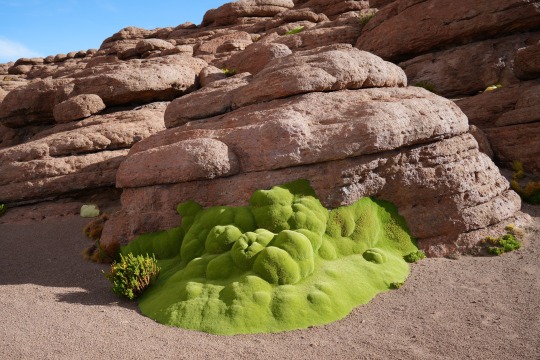
Yareta (Azorella compacta) in Bolivia (elevation of 14,000 ft.).
This may look like a moss, but it isnt! This is a broad-leafed plant in the carrot family, Apiaceae.
These plants can grow to bve over 3000 years old. This large specimen may be over 1000 years old.
photographs by Mark Dwyer
1K notes
·
View notes
Text
As promised, welcome to
Fun biology in TOTK’s designs
I'll keep this post updated as I go through the game. I'm going to skip the more general identifiable things like apples (they're based on apples!) because there are tons of more unusual species to talk about.
Overall, the really interesting thing I've noticed is that many of the more unique Earth-based lifeforms in TOTK are super ancient, like predating dinosaurs ancient, which is a really cool tie-in to the overall time-hopping plotline of TOTK. Specifically, they're found in the new areas (caves, depths) while the surface remains a bit more normal.
(There will be no plot spoilers in this post, and also I've barely gotten into the plot because I'm spending all my time wandering, so shhh no spoilers in the tags for like a month please.)
Most recent additions: More lilies, irises, wild ginger, spiny bones, pigeon extravaganza, plus added some more real photo comparisons to old stuff.
PLANTS
Bryophytes my beloved. Bryophytes are among the earliest land plants, waaaay predating flowers and even seeds. In our world, they’re small by necessity—they lack vascular systems to help move water around like other plants, so they have to stay small and moist (hence their frequency in caves in TOTK—though they do need some light in real life.)
In TOTK they’re quite large and I think that’s very sexy and art directors should give us big bryophytes more often
Anyway, there are three types of bryophytes: mosses, liverworts, and hornworts. First image pair is a moss, second is a liverwort. Those red-brown and palm-tree-like structures, respectively, are their reproductive structures.
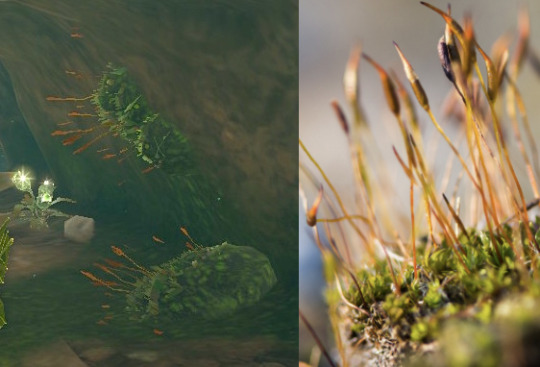

Real liverwort photo © Graham Calow, NatureSpotUK
Not yet spotted: Hornworts! Did they forget the third bryophyte sister :(
I think these next guys are probably lycopods (specifically club moss, which is not a true bryophyte moss, thanks science.) Very old, but vascular, so they're a bit more evolutionarily recent than bryophytes.

Real photo © Gloria Hanley Schoenholtz, virginiawildflowers
All the enormous curly-topped trees in the depths: Ferns! They curl like that until they unfurl. Another very old plant, though younger than bryophytes and lycopods.
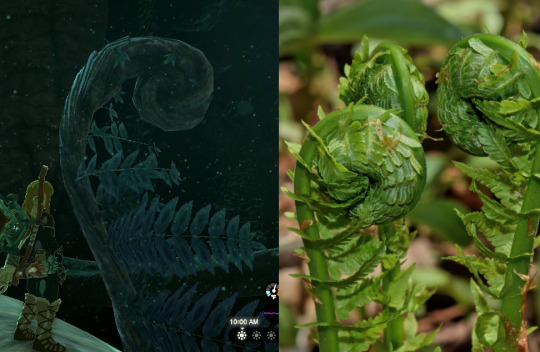
Real photo via The Cosmonaut, Wikipedia
Brightblooms and some of the other giant plants in the depths: Possibly based on a cycad? Again, a very ancient plant lineage. At this point, evolutionarily, they've developed seeds—that giant cone in the center is called a strobilus, and that's the seed structure.
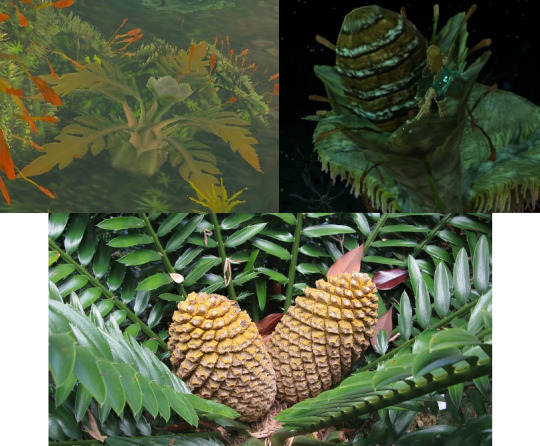
These next few plants are angiosperms, meaning they produce flowers. Angiosperms are a more recent evolutionary lineage—still many millions of years old, but it took a while to develop flowers as a reproductive tactic.
Sundelions (left) are a fun recolor of a lily. There are also some scenery lilies (right) in various places—there are yellow ones that spring up when you turn on a lightroot (which gives them literal and thematic connection to the surface) and several other varieties, including tiger lilies, throughout Hyrule. Fun note, the sundelions appear to only have 5 stamen, while other lilies in the game (correctly) have 6. Seems to be an intentional decision to make it a more distinct fantasy species.
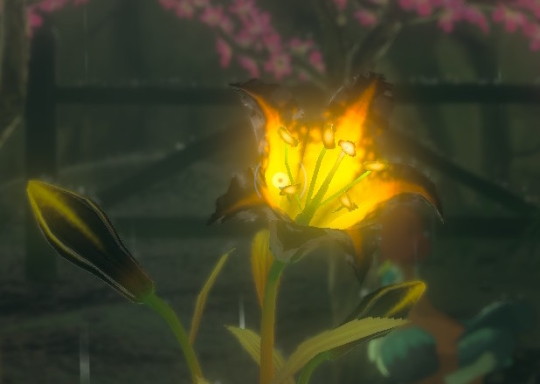
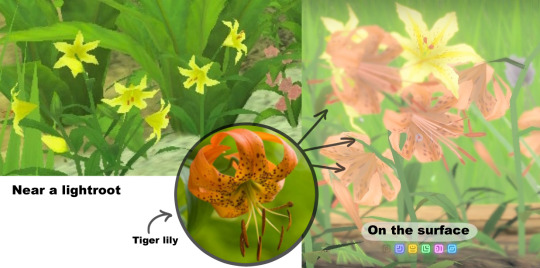
These next ones are Peruvian lilies/Alstroemeria, just used as a scenery plant but a very fun inclusion. Fun fact, not true lilies, so they're not deadly to cats like true lilies are.

Real photo © Dick Culbert, Wikipedia
Plum trees: These are also called out as plum trees in game! There's a journal in Kakariko that refers to the plum orchards.

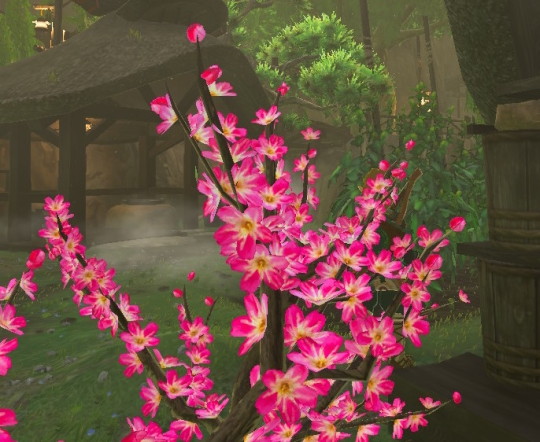
Okay I'm a little proud of figuring this one out. Bomb flowers blend a few botanical references. Superficially, the fruit resembles a type of seed pod called a capsule—specifically it's very similar to a poppy capsule. The little red thing in the center is a nice addition to resemble both a flower stigma (reproductive part that leads to the ovary) and a bomb fuse. Now, poppy capsules disperse their seeds via wind, but there are other plants who do explode their seeds outwards as a dispersal tactic! This is called explosive dehiscence.
There is one tree in particular called the sandbox tree, AKA monkey-no-climb or dynamite tree (yes, really.) Their capsules look more like little pumpkins, but are known for violently exploding when ripe—they can launch seeds at 150 miles per hour (250 km/h) and spread them roughly 200 feet (60 m) away. The photo comparison is a poppy capsule but you should def go look up dynamite tree videos.
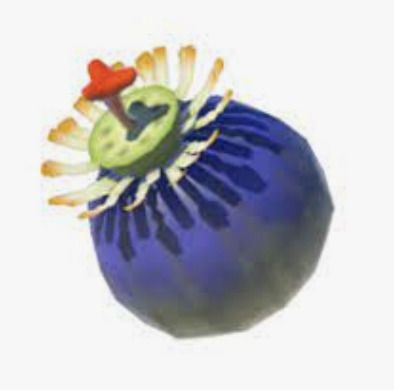
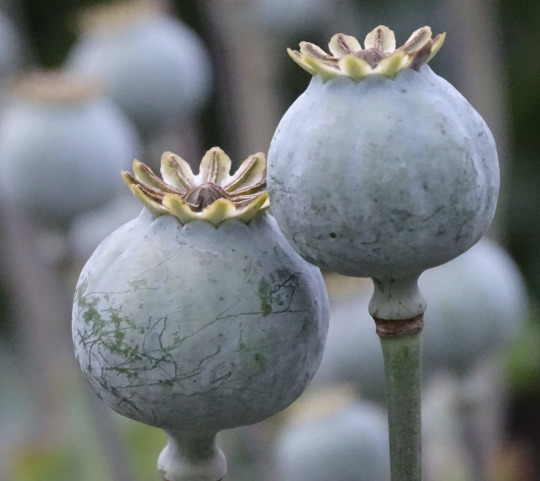
Real photo © PommeGrenade, pixabay
Fire fruits (and the other elemental fruits) grow on the same generic plant that looks kind of like it has grape leaves. Fire fruits resemble a specific botanical thing too though—the black netting is a papery calyx (part of the flower) seen in a nightshade genus, Physalis (golden berries, tomatillos, etc.)


Real photo © Helene Rogers, Alamy
I think this stuff is an Asarum, AKA wild ginger. I was actually puzzling over it until I walked past some today and went HEY
Not sure of the exact species but they're very green and heart-shaped and love being dense and low to the ground.
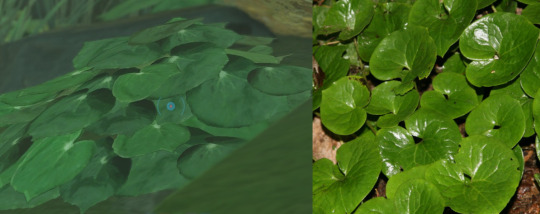
Real photo via David Stang, Wikipedia
Irises: Love irises, one of my favorite flowers and words, very happy to see them in game.

MISCELLANEA
Cup lichen! Lichen is not a plant, but a symbiotic structure of an algae + a fungi. Cup lichen is just a type of lichen formation that has a kind of vertical cup-like structure.
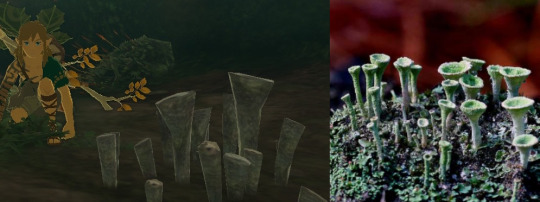
Real photo via Bernard Spragg
Geology crossover! Go look carefully at some of the whiter walls in the depths—they look like they have fossils of coral and other undersea hard-structured animals in them.
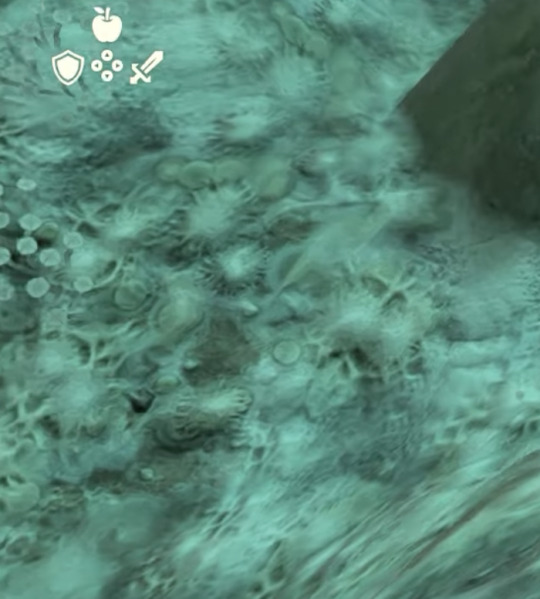
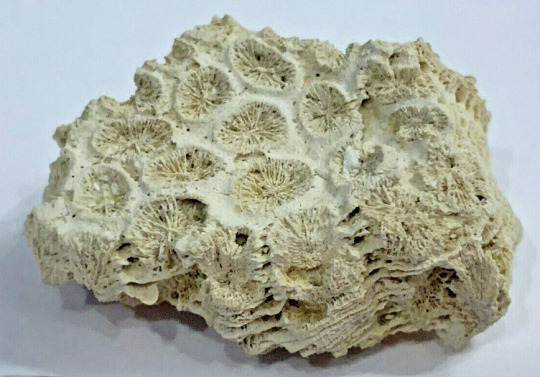
ANIMALS
Sticky lizards: Based on Diplocaulus, a very early (now extinct) amphibian! Their skulls are wacky. We're not sure whether the long sides stood out separately or were smoothly connected to the body by skin flaps, but the separate arrow-like shape is the most popular rendition.
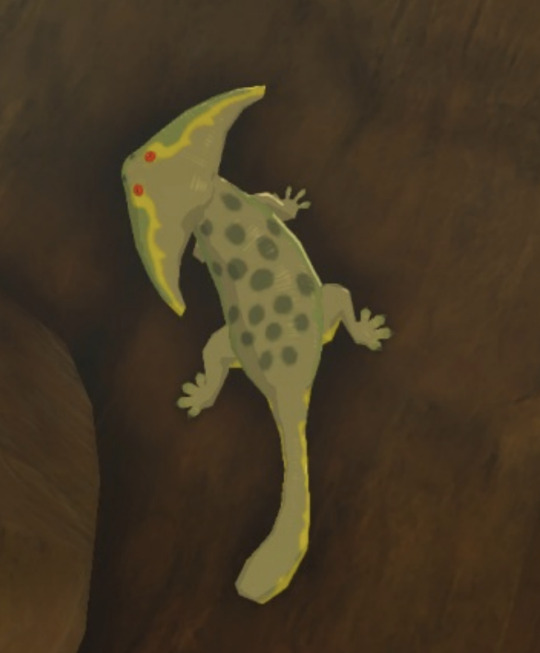

Deep firefly: Might be a stretch because it could just be a multi-winged fantasy critter, but I think the "wings" and antennae are very reminiscent of Anomalocaris, an ancient aquatic arthropod.
Update: Other folks in the notes/tags have pointed out that they're probably based on a cryptid that's especially popular in Japan: skyfish AKA rods! They show up in photos and people think they're an alien lifeform. In reality, they're an optical blur created when a lower quality video captures intermittent flaps of an insect's wings, leaving sort of a many-winged smear in the photo. Thanks to all who left info!
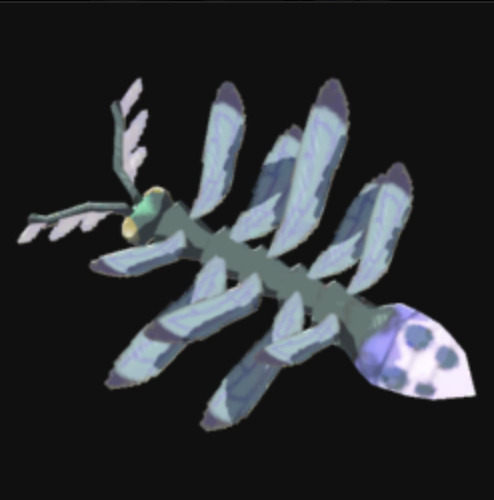
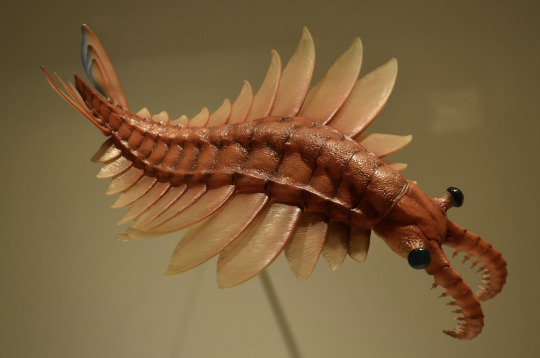

Little frox: Another stretch because it totally could just be a Hinox-like frog, but every time I see the little ones I can't help but think of like...Ichthyostega, Mastodonsaurus, Eryops, and other early amphibians. They were pretty hefty—little frox size or bigger—and had with little waddling legs. This is less "I think it's definitely this" and more "it makes me happy when I picture frox as primitive amphibians."


I haven't detailed many of the scenery animals around Hyrule because most are identifiable with the camera function—it'll tell you that a certain animal is a heron or porgy, for example, and those groups are real, even though the exact species is made up. But I think the pigeons are fun because they're all crested pigeons. Pink-necked green pigeons may have also been the inspiration for the color palettes on the wood and rainbow pigeons.
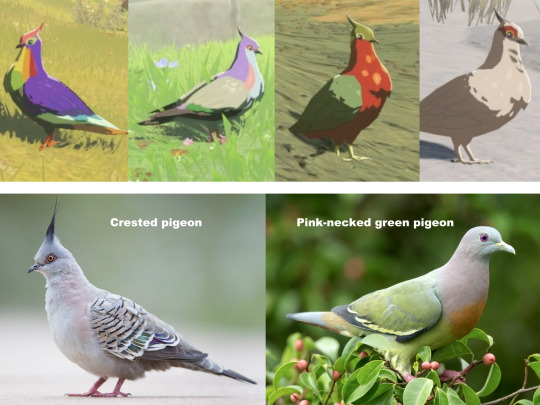
Both pigeon photos via JJ Harrison, Wikipedia
Spiny bones: Not a specific critter, but those spiny bones that you can find lying around Eldin Canyon are vertebrae—possibly from the same thing that left those big rib cages around? The top spike is the spinous process where muscles attach, the littler spikes on the side are the transverse and articular processes. The dark O in the center is the spinal cord.
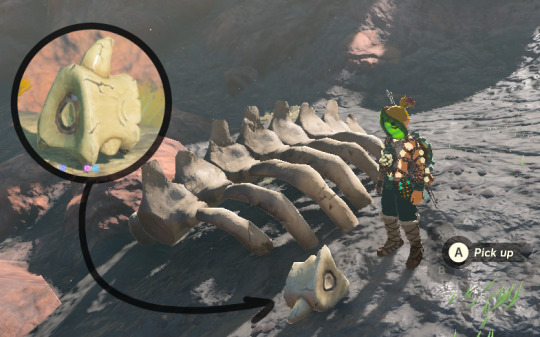
Also I made a friend who finally recognizes my purpose in Hyrule.

That's all I've got for now! Will add more as I keep playing.
#tears of the kingdom#totk#legend of zelda#loz#science fun#biology#lizard#plant#botany#image heavy#long post
7K notes
·
View notes
Text
Luna, UCSC Alumnus, Plant Biology Major, Class of 2021, UC Santa Cruz

"I graduated from UCSC in 2021, and I can say that it is extremely difficult to make it here financially. For the last two years of my undergrad, I lived with eight other people in order to split high rent costs. Seven of them lived in a small house, and I lived in the repurposed garden shed outside the house. I was only recently able to join the academic researchers union [AR 5810], and while I won't be benefitting from the UAW gains this strike aims to achieve, I'm still out here because I want to help the undergraduates and grad students who come after me. All struggles are united in the fight for a new system that guarantees human rights and decency and I see labor actions like this strike as currently one of our most powerful tools in building towards engaging in one unified struggle."
0 notes
Text
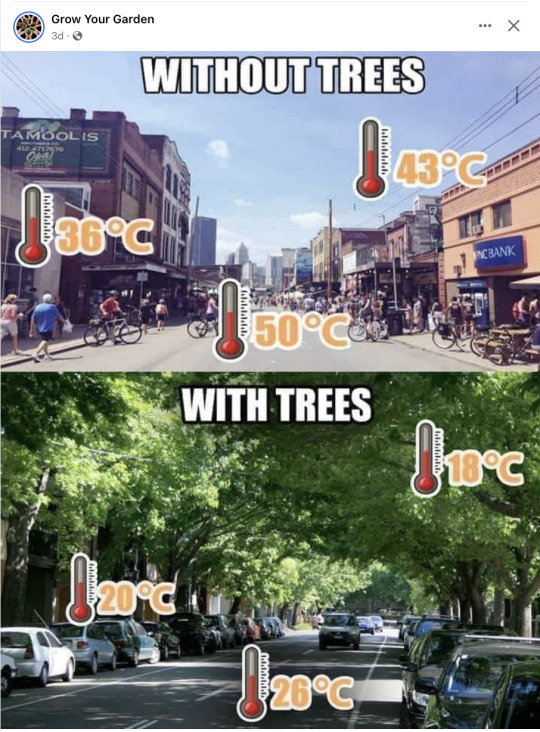
“It is not so much for its beauty that the forest makes a claim upon men’s hearts, as for that subtle something, that quality of air that emanation from old trees, that so wonderfully changes and renews a weary spirit.”
― Robert Louis Stevenson
Source: Grow Your Garden Instagram page
#katia plant scientist#botany#plant biology#plant science#plants#trees#plants make people happy#sustainability#ecological#solarpunk#intersectional environmentalism#environmentalism
2K notes
·
View notes
Text

Always Waiting
~☆◇Prints◇☆~▪︎~☆◇Commissions◇☆~▪︎~☆◇Kofi◇☆~▪︎~☆◇For inquiries: [email protected]◇☆~
#ichi makes art#art#digital art#illustration#fantasy art#digital illustration#science fiction#scifi#landscapes#cat#robots#sculptures#body horror#water#plants#nature#2d animation#animated#gif warning
521 notes
·
View notes
Text

47K notes
·
View notes
Text
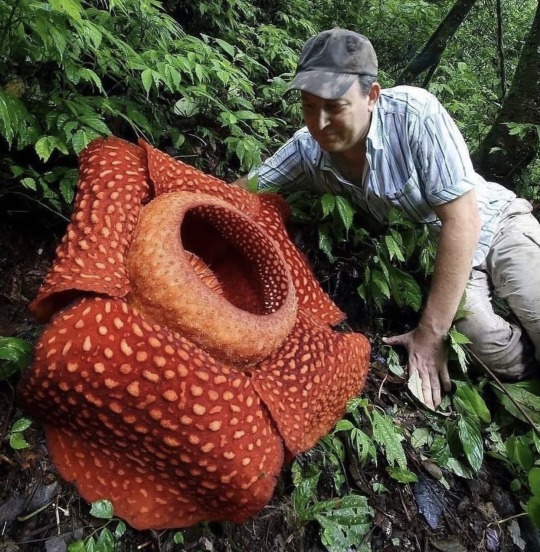

The largest blooming flower on the planet is the Rafflesia arnoldii, which is typically found in the rainforests of Indonesia. This uncommon flower can reach a diameter of 3 feet and weigh up to 15 pounds.
5K notes
·
View notes
Text
Tiny external structures in the wax coating of blueberries give them their blue color, researchers at the University of Bristol can reveal. This applies to a lot of fruits that are the same color including damsons, sloes and juniper berries.
In the study, published in Science Advances, researchers show why blueberries are blue despite the dark red color of the pigments in the fruit skin. Their blue color is instead provided by a layer of wax that surrounds the fruit which is made up of miniature structures that scatter blue and UV light. This gives blueberries their blue appearance to humans and blue-UV to birds. The chromatic blue-UV reflectance arises from the interaction of the randomly arranged crystal structures of the epicuticular wax with light.
Continue Reading.
713 notes
·
View notes
Text

Unprecedented Footage Shows Plants ‘Talking’ to Their Neighbors about Potential Predators
697 notes
·
View notes
